Matador Network's Blog, page 1069
June 25, 2019
The best things to do in El Limón

Adventurous travelers cringe at the thought of sipping watered-down Piña Coladas at an all-inclusive resort in the Dominican Republic’s Punta Cana. Many vacationers never make it past this famous destination. Yet the country, which is a two-hour flight from Miami, has the raw natural beauty to keep thrill hunters occupied for weeks on end. To see it, get out of Punta Cana and make your way up to El Limón.
El Limón is a municipal district at the end of the Las Terrenas-Sánchez highway, about three hours from Santo Domingo. It’s an effortlessly beautiful village on the north end of the Samaná peninsula that butts up against the Atlantic Ocean. Getting there is an experience in itself. You enter the village by descending the curviest, most scenic road in the Caribbean while surrounded by palm trees and more shades of green than you likely knew existed. Once in the municipal district, there’s one main road that connects you to wherever you need to go.
The first activity on your list should be a hike to Salto El Limón, a 130-foot-tall waterfall at the end of a 1.5-mile trail through the forest. Spending time around here and not visiting the waterfall is like going to Paris and not seeing the Eiffel Tower. The waterfall is one of the most beautiful in the country, and you’ll see travelers and locals alike making their way up to snap photos of the blue-green water.

Photo: Petr Zyuzin/Shutterstock
There are two ways to get to Salto El Limón. The easiest is to rent a horse and hire a guide from town, which is both quick and cheap. If you’d rather walk, the medium difficulty hike takes about 45 minutes. Be ready to sweat and feel some thigh burn. There are many routes, and it’s a good idea to hire a local guide if you want to make sure you take the fastest and cleanest one. Guides will take you up there for as little as $6.
Once you’ve taken in the main waterfall, look for the stairs on the right and walk for another 15 minutes. You’ll reach a smaller and equally as beautiful waterfall that’s much less crowded and quite cozy. The best time to visit the waterfall is during the rainy season, June through November, when the pool is full enough for swimming.
Get a taste of DR’s cigars.

Photo: Dayana Aleksandrova
Cuban cigars get much of the glory, but the cigars from the Dominican Republic deserve your attention. Head to the communal pool in El Limón and look across the street for a small blue shack with a sign that reads “cigar shop.” Here, you’ll find the workspace and second home of Don Juan Mejia, a famous tobacco craftsman. It’s an educational experience of the first order, and you’ll meet the man himself when you visit.
Don Juan is originally from Santiago, in the western part of the country, and he started making cigars more than 40 years ago out of necessity when he had nothing to eat for days on end and had to scavenge for food with his machete. Times have changed.
He typically arrives at his shop around midday to begin the process of rolling, drying, and cutting the cigars. Everything for sale is handmade, and watching him work is pure meditation. Ask him about anything cigar-related, like how to find the perfect cigar, where the ingredients come from, and what type of tobacco Fidel Castro and Ernest Hemingway preferred. I recommend grabbing a packet of Hemingways or Torpedos. For gifts, grab a box of the thinner vanilla-scented cigars.
Explore the outdoors and sleep in a remote eco-lodge.
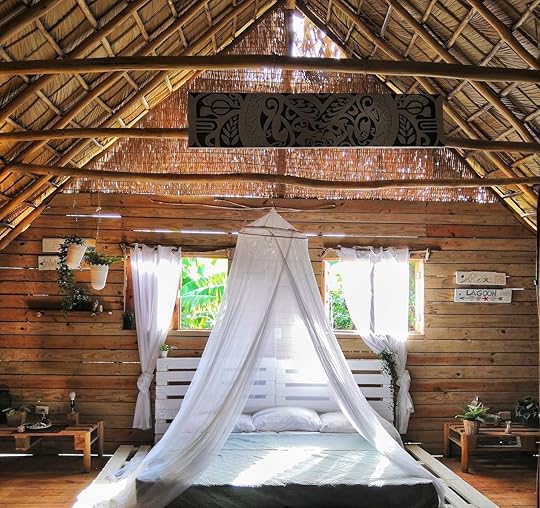
Photo: Dayana Aleksandrova
The waterfalls aren’t the only way to get your outdoor fix here. Horseback rides on the beach are popular and readily available. There’s rock climbing above Playa Frontón on a steep but easily accessible face, and surfing (as well as surfing lessons) in the Atlantic at Playa Bonita and beyond. After dark, completely immerse yourself in nature at the Samana Ecolodge and take in El Limón’s night sky, clear and full of stars.
The lodge is an eco-hotel, a term that varies depending on where you are in the world. Here, it means what the name suggests. The cozy wooden cabins are made entirely of organic materials, with expansive views of the sky that put it somewhere between glamping and staying in a traditional hotel. The sunrises off the coast are unreal, and the birds celebrate each morning with a seemingly endless choir of tweets and twacks. Breakfast will most likely be an organic omelet with a side of passion fruit grown on the property. The lodge is located on a quiet field that’s about a five-minute walk from the road, so you’ll be connected to the village while having plenty of peace and quiet.

Photo: Samana Ecolodge/Facebook
There’s no way to pass through El Limón and miss the local watering hole, called the rollito. This natural pool is connected to a river and provides much-needed relief from the strong sun. Local families come here to swim, listen to bachata, and hang out. There’s a restaurant next to the pool that serves traditional food. Go for the fried chicken, tostones (fried green plantains), beans, and salad with an ice-cold bottle of Presidente beer. A meal goes for around $6 per person, and the portions are big. Hanging out here will give you a look into the daily lives of locals, and if you speak Spanish, you’ll be chatting it up with a villager in no time. 

More like this: The coolest Airbnb experiences in the Caribbean
The post Skip Punta Cana for the real Dominican Republic in El Limón appeared first on Matador Network.

‘Game of Thrones’ prequel filming

Whether you were happy with the way Game of Thrones ended or not, you probably weren’t ready for it to end. Lucky for you, you won’t have to wait too long for your next dose of Westeros. A long-rumored Thrones prequel is in the works, and it’s already begun filming in Northern Ireland — the same location for much of the original series’ filming. The prequel doesn’t have a title yet, though it will be set during the Age of Heroes, thousands of years before the events in Game of Thrones.
So far, according to the Belfast Telegraph, filming has taken place at a secret location in County Down, on the north coast of Northern Ireland, and Titanic Studios in Belfast. Many hope the show will touch upon the origins of the Night King, the founding of the great houses of Westeros, and of course, plenty of dragons.
HBO has been rather tight-lipped about the new series, however, saying, “From the horrifying secrets of Westeros’s history to the true origin of the White Walkers, the mysteries of the East to the Starks of legend, only one thing is for sure: It’s not the story we think we know.”
In addition to Naomi Watts, who will play the series’ lead, the show will also star John Simm from Doctor Who and Life on Mars, and Miranda Richardson from The Crying Game. 

More like this: The best one-day ‘Game of Thrones’ road trip through Northern Ireland
The post The ‘Game of Thrones’ prequel has begun filming in Northern Ireland appeared first on Matador Network.

Mexico beaches hit with algae
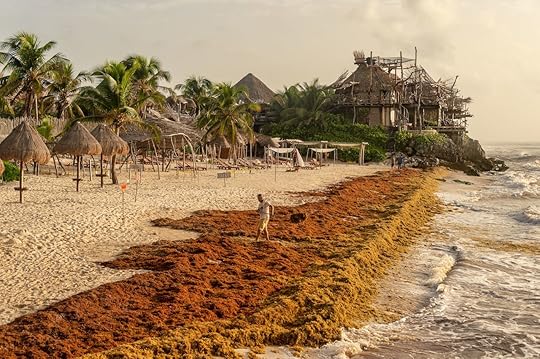
The mention of Caribbean beaches conjures up images of pristine stretches of white sand and crystal-clear turquoise waters, but an infestation of algae along Mexico’s Caribbean coastline is threatening that reputation. Sargassum, a type of brown algae, is covering the beaches, turning the water brown, and emitting a strong and unpleasant smell resembling rotten eggs as it decomposes. According to the BBC, around 621 miles of Mexican beaches have been heavily impacted by sargassum this year, including popular destinations like Cancun, Playa del Carmen, and Tulum.
The Associated Press reported that sargassum might do more than just ruin tourists’ vacations on which the local economy relies. As the algae decomposes, it falls to the bottom of the sea and smothers the coral. The large amount of algae on beaches, despite locals trying to shovel it away regularly (in vain), also prevents turtles from nesting.
Mexico is not the only spot that has to deal with the devastating algae; AP explained that all the islands and mainland beaches in the Caribbean are touched by the infestation. Check out Sargassum Monitoring‘s maps of the beaches affected because booking your vacations. 

More like this: Beyond Cancun: 7 beautiful and underrated beaches in Mexico
The post Mexico’s Caribbean beaches plagued by stinky, brown algae appeared first on Matador Network.

What it’s like to visit Antarctica

Antarctica is one of those few remaining destinations where only very few tourists venture because of its inhospitality and remoteness. But if your dream is to see penguins in person, kayak around towering blue icebergs, and photograph uncharted mountains, know that even the most normal non-scientists among us can travel to the seventh continent. With a little bit of preparation, some funds, and an acceptance that you might not always be cozy, Antarctica is definitely feasible.
There’s no way around it: You need to book an organized trip.

Photo: evenfh/Shutterstock
Sorry, folks — this isn’t somewhere you can take your sailboat on a weekend getaway. If you want to travel to Antarctica, you’ll need to book an organized trip with an expedition or tourism company. In order for a company to run trips to the seventh continent, it is required to be a member of the International Association of Antarctic Tour Operators (IAATO). Luckily, there are several options.
Most travelers reach Antarctica via expedition ships. The companies that operate these ships offer a huge variety of activities from kayaking and ice climbing to photography workshops and even overnight camping. Every cruise is staffed with a masterful crew and a fleet of knowledgeable experts in biology, glaciology, photography, ecology, and more.
Where your cruise leaves from will depend on where on the continent you intend to visit. Most expeditions, which set their course on the Antarctic Peninsula, leave from the port city of Ushuaia, Argentina. This colorful South American town sits at the bottom tip of Tierra del Fuego and the mouth of the Beagle Channel. However, a few cruises, usually visiting the Ross Sea, depart from New Zealand or, sometimes, South Africa.
Due to the regulations set by IAATO, the majority of expedition companies take care to be eco-friendly. One company especially dedicated to sustainability is Quark Expeditions. All of Quark’s vessels use a clean-burning marine gas oil (MGO) with a low emission factor and strictly conform to all waste disposal protocols at sea. In addition, Quark’s ships only serve sustainable seafood on board. Other expedition companies with well-known eco-initiatives include Oceanwide Expeditions and Zegrahm Expeditions — both of which are founding members of IAATO.
Note that a trip with any of these companies will run a huge price range depending on your selected living accommodations and activities. For example, Quark Expeditions has a 14-day trip to the Antarctic Peninsula that costs anywhere from $10,000 (for a triple shared room) to nearly $35,000 (for a single balcony suite).
Fear the Drake Passage.

Photo: Bruno Lassus/Shutterstock
Travelers departing from Ushuaia dread crossing the Drake Passage, and for good reason. This stretch of ocean between Argentina and the Antarctic Peninsula is well-known to have the roughest seas in the world. Due to its unique geography, currents at this latitude are able to circumnavigate the globe without interference, leading to monstrous swells and powerful winds; 50-foot waves and 100-knot wind gusts are not rare. On occasion, you might get lucky and experience an unusually calm passage — known as the “Drake Lake” — but more than likely, your voyage will be a rocky one. If you’re worried about seasickness, make sure to visit your local pharmacy before departure. Expedition guides who frequently make this two-to-three-day trip will let you in on a secret: ginger tablets work just as well. If all else fails, the doctor onboard may have seasickness patches (tiny Band-Aid-like stickers placed behind the ear) for relief in extremely volatile seas.
This is no Caribbean cruise.

Photo: iurii/Shutterstock
On other cruises, the ship leaves port with a plan, and follows that course immaculately. However, the weather is so unpredictable in Antarctica that your ship will probably end up changing its course more than a few times throughout your voyage. Your ship may be en route for the Lemaire Channel, but end up sailing to Paradise Bay instead when the captain sees that there’s too much ice blocking the path (some have been trapped before). Antarctic expedition ships are ice-breakers, but of varying class, and therefore are limited by the thickness of the pack-ice. You may be scheduled to arrive at a location in the morning, but not arrive until the evening due to rough seas. There may be days when it’s too windy to go to shore at all. Or, perhaps one of the mates might spot a pod of orcas, and you spend the day following these amazing creatures.
This improvisational format may seem daunting — or even troubling — but an Antarctic cruise will teach you adaptability like no other. You’ll learn that the most amazing experiences are often the ones you can’t plan for.
The weather isn’t exactly Caribbean-like either.

Photo: Vadim Nefedoff/Shutterstock
Something you can plan for, however, is the cold. As a tourist, you will be visiting Antarctica during the austral summer. The tourist season runs from October through March, and each month offers a different experience with regards to what wildlife you will see and ice conditions. October and November mark the very beginning of springtime down south, and during this time, snow at landing sites is still pristine and largely untouched by tourists, and penguins can be observed mating and nesting. At that time, ice is at its thickest, and some areas may be restricted because of it. By February, newly hatched penguin chicks have arrived. This is also the best time to spot whales and larger seabirds. By the time March rolls around, most landing sites will be muddied from a long season of tourism; however, the ice will be the most melted during this month, allowing for vessels to sail further south.
During the austral summer, the sky will be bright for almost 24 hours a day, and temperatures are fairly warm. In January, the peak of austral summer and the warmest month, the temperature hovers around 1 to 2 degrees Celsius (33.8 to 35.6 degrees Fahrenheit). Although this may be less harsh than you expected, you’ll still need all your winter gear to keep warm. Conditions can change rapidly — snowstorms only take a minute to show up. Usually, buying your own parka won’t be necessary — most expedition companies will supply you with a brightly colored coat once you board. However, you will want to bring waterproof pants, lots of base layers, warm socks, scarves, and a hat. Insulated boots are often supplied on board, but not always — make sure to check with your company. Lastly, remember to pack some regular everyday clothes to wear while walking around the ship.
Due to the temperamental weather, you will partake in many safety briefings and drills in the first few days. This, of course, is all necessary in case of an emergency. Many of these safety briefings will also be in regards to wildlife protocol. The IAATO has set specific rules about how to interact with wildlife that must be followed to a T. For example, penguins always have the right of way when crossing “penguin highways,” which are paths made by penguins for walking from place to place. Whales may only be approached a certain distance in kayaks, and all nests must be avoided. Rules such as these are strictly enforced in an effort to protect this pristine place.
The rule of thumb for visiting Antarctica is simple: Expect the unexpected. Down on the seventh continent, conditions can shift in the blink of an eye, and plans are subject to change. However, you can prepare to be blown away by your experience, whatever it may end up containing. Any expedition guide will tell you — every trip to Antarctica is absolutely unique and filled with a special wonder of its own. 

More like this: How to get to Antarctica even if you’re completely broke
The post What it’s really like to travel to the most inhospitable place in the world appeared first on Matador Network.

More than 500 vultures poisoned

A shocking number of endangered vultures died last week after being poisoned by poachers in northern Botswana. After feeding on three elephant carcasses laced with a poisonous chemical, a total of 537 vultures and two tawny eagles were found dead, reports the Botswana government. According to conservationists, the vultures were targeted because their scavenging activities (circling around carcasses) can often alert authorities to the presence of poached animals and, consequently, poachers.
Since it’s currently vulture breeding season, many of the vultures were certainly new parents, leaving behind orphaned babies. Kerri Wolter, CEO and founder of conservation charity VulPro, said to The New York Times, “[Since] vultures are late maturing and slow breeders, the magnitude of losing just under 600 vultures in one week is incomprehensible. The species cannot withstand these losses and it is impossible to recover the disappearance of these individuals and breeding pairs in our lifetime.”
Vultures are vital to a healthy ecosystem, helping keep the environment clean and minimizing the spread of diseases.
The vultures poisoned included 10 cape vultures, 14 lappet faced vultures, 468 white-backed vultures, 17 white-headed vultures, and 28 hooded vultures. All of them are endangered and critically endangered according to the IUCN Red List and their population numbers are decreasing. 

More like this: 10 endangered animals to see (and save) before they’re gone
The post Poachers poison over 500 endangered vultures in Botswana appeared first on Matador Network.

June 24, 2019
Coney Island Mermaid Parade

Every year since 1983, thousands of people dressed as mermaids, mermen, pirates, and all types of sea creatures have flocked to Coney Island to celebrate art and culture at the Mermaid Parade in Brooklyn. It is, by some accounts, the largest art parade in the United States. On June 22, 2019, nearly 850,000 people attended — some 160,000 more people than live in the city of Boston. And when it comes to pure spectacle, those 850,000 people aren’t let down by the 3,000 or so costumed masses marching in the parade.
The goals of the Coney Island Mermaid Parade, according to the event’s website, are to “bring mythology to life for local residents who live on streets named Mermaid and Neptune,” as well as “create self-esteem in a district that is often disregarded as ‘entertainment.’” It’s also, importantly, a parade that lets “artistic New Yorkers find self-expression in public.”
The Mermaid Parade was started by Dick Zigun, a local advocate for the arts. Inspiration came from the sea-themed adornments that topped Coney Island’s buildings in the 1970s when Zigun moved there. Today, it’s gone from a community event to a well-publicized parade with a queen mermaid and king Neptune. (Woody Guthrie’s kids Arlo and Nora Guthrie were crowned in 2019.)
Along with costumed revelers, there are antique cars, dance groups, hand-pulled floats, marching bands, and live music acts. The water theme is taken loosely by some, as each float has its own agenda and message to push — whether that message is whimsy, immigrant rights, or climate change.
It costs $200,000 to put on, according to CNN, and is funded by the nonprofit Coney Island USA and sponsors like the local Coney Island Brewing Company, which brews beer across the street from the start of the parade.
Words and numbers, however, don’t do the Mermaid Parade justice. For that, there are photos.

Photo: Nickolaus Hines
A couple of crowned mermen take their spot along with the other bystanders on the parade’s path.

Photo: Steve Edreff/Shutterstock
King Neptune and queen mermaid this year were Arlo and Nora Guthrie, the kids of the late Woody Guthrie. Nora carried a guitar that read, “This machine kills fascists.”
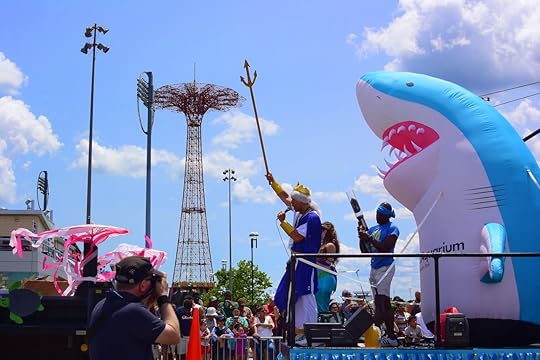
Photo: Nickolaus Hines
A man with a trident pushes onward riding the aquarium’s float.
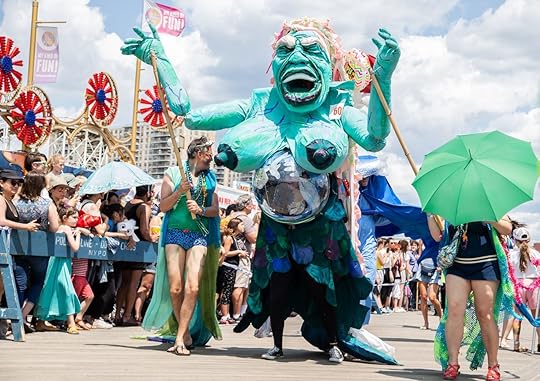
Photo: Aleksandr Dyskin/Shutterstock
The Mermaid Parade may be about mermaids, but it’s far from a beauty pageant. Other sea creatures make appearances as well.

Photo: Nickolaus Hines
Coney Island Brewing Co.’s appropriately themed Mermaid Pilsner made a big appearance as a float.

Photo: Aleksandr Dyskin/Shutterstock
High flying acts make an appearance, as to be expected at an event so close to Coney Island’s much-loved sideshow.

Photo: Nickolaus Hines
Dogs in beach attire also took part. This is Shaggy, a skateboard loving dog who stole the show.
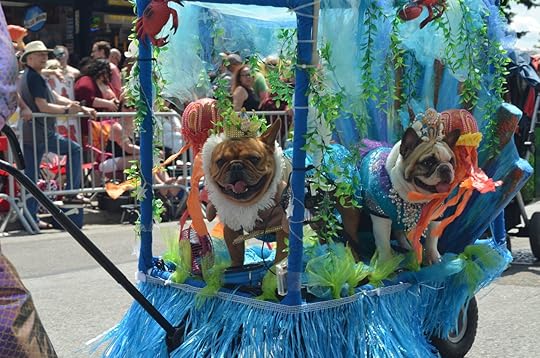
Photo: Ryan Rahman/Shutterstock
Some dogs were in more regal attire.

Photo: Nickolaus Hines
Killer whales rode through, but they were friendly.

Photo: Ryan Rahman/Shutterstock
Body paint companies are likely a big fan of the Mermaid Parade.

Photo: Nickolaus Hines
Some floats had themes, others took a very open mind to what deserves to be on a float.
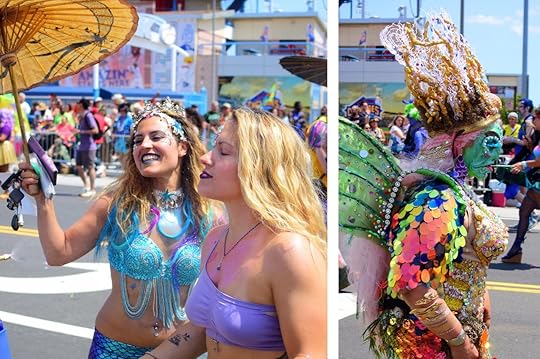
Photo: Nickolaus Hines
Possibly the only place in the world that mermaids walk freely alongside sea creatures.

Photo: Nickolaus Hines
Also pirates.

Photo: Nickolaus Hines
Even the police working the event got in a little sightseeing.

Photo: Nickolaus Hines
Aquaman made several appearances throughout.

Photo: Nickolaus Hines
As the parade marched on, judges rated costumes and gave commentary.

Photo: Nickolaus Hines
And what is a parade without appropriate refreshments? 

More like this: The 20 most magical Pride parades in the United States
The post Mermaids and sea creatures descend on Brooklyn for the largest art parade in the US appeared first on Matador Network.

Mesa an autism-certified destination
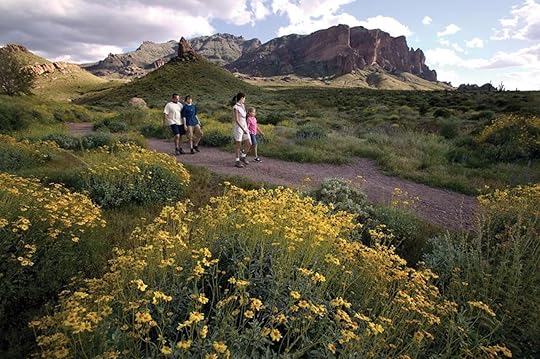
For families with children on the autism spectrum, traveling can sometimes prove difficult. Many popular tourism destinations don’t have autism-trained staff or the facilities equipped to handle autism-related issues or emergencies. However, these families might now be placing Mesa, Arizona, at the top of their travel list.
That’s because Mesa’s tourism is now managed by the country’s first-ever autism-certified destination marketing organization. This means that Mesa is now a “Certified Autism Center” according to the International Board of Credentialing and Continuing Education Standards (IBCCES) and will be specially equipped to welcome those with autism.
The certification comes after the Visit Mesa staff and governing board of directors completed specialized training, which equipped them with the expertise to assist families and individuals with special needs. This includes helping them plan their vacations to Mesa and providing individualized support and access.
Now that the Visit Mesa organization has become autism-certified, the city itself is taking major strides to continue the trend. Guest-facing staff in Mesa businesses — like hotels, museums, and other family attractions — are actively completing autism sensitivity and awareness training. Each business will be individually certified through IBCCES.
Marc Garcia, CEO of Visit Mesa, told AzFamily, “It’s simply acknowledging and understanding what some of the symptoms of autism and sensory disorder are. We wanted to get out in front of it. We wanted to be first. We wanted to be able to tell the world we are more than autism-friendly; we’re autism-certified.” 

More like this: 12 pro tips for taking your kids to the museum
The post Visit Mesa becomes the country’s first autism-certified destination marketing organization appeared first on Matador Network.

The best lakes near Phoenix

Mention you’re going boating in Phoenix and you’ll probably get a few strange looks. Phoenix may be called the Valley of the Sun, and it may sit in the middle of a desert, but locals know there’s actually a ton of water around — if you know where to look. It’s easier than you think to spend your day swimming, fishing, boating, or tubing nearby and still make it back in time for dinner. Here are five lakes and rivers that are an easy drive from Phoenix and provide a relaxing day on the water.
1. Kayak at Lake Pleasant Regional Park.
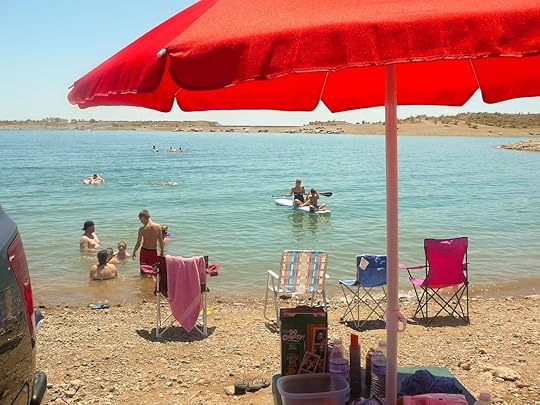
Photo: BlaineT/Shutterstock
Lake Pleasant Regional Park is where Phoenicians quietly slip through the still water into a cove surrounded by desert canyons. Lake Pleasant, a 10,000-acre reservoir on the northwest border of Phoenix and Peoria, offers a number of outdoor adventure activities like hiking and camping, but most people come for a day on the water. The lake has two marinas and two separate boat launching ramps.
Pleasant Harbor Marina sits on the southeast side of the reservoir and is only 40 minutes from downtown Phoenix. Here you can rent single or tandem kayaks and stand-up paddleboards from Go Paddle AZ and explore the 100 miles of shoreline. Rentals are by the hour and you can reserve them online or on the day of your visit. Yoga fans and others looking to experience the zen of the surrounding Sonoran Desert may be interested in stand-up paddleboard yoga classes offered on certain weekend days in summer. For a bit of powered adventure, Boats4Rent rents jet skis and pontoon boats by the hour, half day, or full day.
On the other side of the lake is Scorpion Bay Marina, which also rents kayaks as well as pontoon boats, jet skis, sport boats, and water toys like wakeboards and water skis. Rentals are available from sunrise to sunset, and both marinas have restaurants, so you can recharge after spending the day working out those arm muscles while paddling around the lake.
2. Tube down the Salt River.
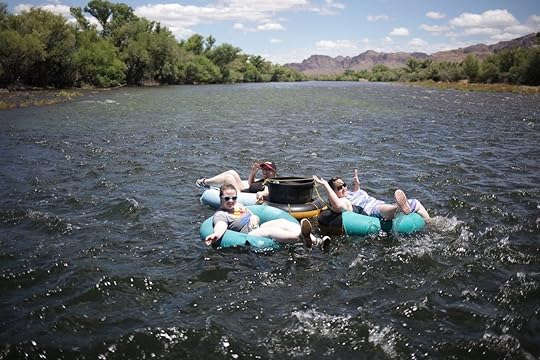
Photo: Salt River Tubing/Facebook
Tubing on the Salt River is practically a summer rite of passage for Phoenicians. Usually starting mid-May and going through Labor Day, the best spot is in Tonto National Forest, just east of Mesa. The Salt River Tubing company offers leisurely trips down the Lower Salt River that can last two, three, or five hours. Tubing is available for adults and children that are over eight years old and four feet tall (kids must meet both guidelines in order to ride). They even allow you to bring coolers with food and beverages — including alcohol — but no glass containers. Just make sure to take any trash out with you.
For the 2019 season, the $17 tubing fee includes parking, tube rental, and a shuttle up the river to the launch site after your ride. It’s open daily from 9:00 AM to 6:00 PM depending on the weather. The last tube rental is 1:00 PM, but you can continue to float down the river at your leisure until 5:00 PM. It even hosts themed weekends such as pirate day, superhero day, and rodeo day. There’s not a lot of shade on this river, however, so don’t forget sunscreen and a hat. Keep an eye out for wild horses along the banks.
3. Fish on Saguaro Lake.
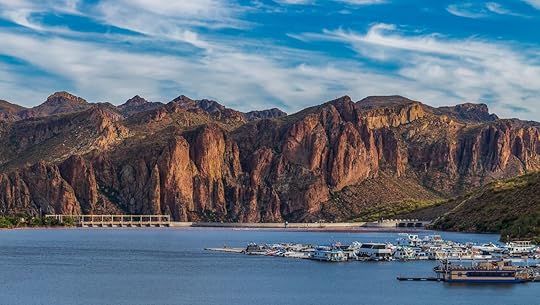
Photo: Ray Redstone/Shutterstock
There are some great fishing spots outside of Phoenix, such as Saguaro Lake. This lake is a 1,200-acre reservoir located 45 minutes east of Scottsdale in Tonto National Forest. It’s a deep canyon lake, one of several reservoirs made by damming the Salt River back in the early to mid-1900s, and has 22 miles of shoreline with plenty of views of the iconic saguaro cacti — because it’s still the desert, after all. The lake is stocked with trout in winter by the Arizona Game and Fish Department, and fish habitat structures have been built to make it easy for those who want to fish for bass, trout, walleye, and catfish.
The marina is home to Precision Marine, which rents pontoon and fishing boats, as well as fishing equipment. If sightseeing is more your thing, take a cruise on the Desert Belle, a 90-minute narrated boat tour, to learn about the history, wildlife, and geography of the region while leisurely traveling around the lake. You can even make this a full weekend adventure by staying at one of the 10 sites at Bagley Flat Campground that are only accessible by boat.
4. Jet ski on Bartlett Lake.
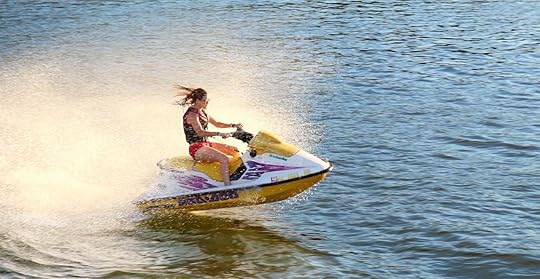
Photo: DCornelius/Shutterstock
A little farther north of the city sits Bartlett Lake, a reservoir on the Verde River 20 miles east of the town of Carefree. This reservoir is one of the larger lakes in Tonto National Forest with 2,815 acres of water surface that’s usable for boating. Surrounded by desert mountains and cool blue water, this is the perfect lake to make waves while zipping around on a jet ski.
Bartlett Lake Marina is open from 9:00 AM to 5:00 PM daily and rents jet skis to guests 21 and older for two- and four-hour intervals. The jet skis are launched from their private dock, so you can get on the water right away. The marina also provides half day and full day pontoon, sport, and fishing boat rentals, as well as kayaks or wakeboards if that’s more your style. Reservations are recommended for half- and full-day boat rentals, but hourly rentals are available for walk-up customers. It’s another great place for a weekend adventure with shoreline camping available and nearby hiking trails in Tonto National Forest.
5. Boat on Canyon Lake.

Photo: Harry Beugelink/Shutterstock
Canyon Lake is only 45 miles from Phoenix in the Superstition Wilderness, less than an hour’s drive. It’s open year-round and features desert cliffs, impressive rock formations, and multiple coves that are great for fishing. You can easily spend your day cruising around the lake, water skier in tow, or rent a pontoon boat for a day of relaxing with your crew. Stop at Precision Marine at Canyon Lake Marina for boat and water ski rentals. Boats can be rented by the hour, half day, or full day, and reservations are recommended.
If you prefer a quieter time on the water, sign up for a sightseeing or dinner cruise around the lake on the Dolly Steamboat, or head to the east end of the lake, where the water winds through desert canyons and is closed to water skiing, for scenery and seclusion. This peaceful area is the perfect location to try to spot some of the local wildlife in the surrounding landscape. Canyon Lake is busy most weekends in summer, so come early to get parking and make reservations for any rentals. 

More like this: This stunning Scottsdale desert has the most rewarding hikes for every ability
The post 5 ways to spend your day on the water near Phoenix appeared first on Matador Network.

SAS serves farm-to-table meals

Plane food hasn’t always had the best reputation, but now more than ever, airlines are going above and beyond to make meals tastier and healthier, and to cater to passengers’ diverse tastes and intolerances. Scandinavian Airlines is pulling out all the stops to give passengers a fresh, local, and sustainable dining experience while on board.
Expanding on the 2017 “New Nordic by SAS” concept that consists of offering locally sourced, farm-to-table food on its short-haul Scandinavian and European flights, the airline is introducing two new plant-based dishes to its menu rotation.
Alexander Lund, food and beverage product manager for SAS, said to Skift, “We listened to our customers and their feedback when shaping our concept. They say they have a healthy lifestyle and they want to choose what they eat. They care about animal welfare and where their food comes from, so there was already a huge emphasis on plant-based dishes. “
For SAS Plus passengers, the meals are included, while economy travelers must purchase them in advance. The pre-ordering system helps the airline reduce waste by only producing as many meals as it absolutely needs.
“New Nordic by SAS” has gone a long way toward improving the airline’s sustainability, even when it comes to the meal’s packaging. Design firm Designit, which assisted the airline with the food overhaul, said that “SAS now sources 95% of its food from local farmers, compared to just 5% before the project […] From the ingredients to the small, cube-shaped packaging, every component of this service is designed to be frictionless for passengers and cabin crew.” 

More like this: The best (and worst) drinks to order on an airplane
The post Scandinavian Airlines in-flight menu goes seasonal, local, and vegan appeared first on Matador Network.

First poster museum in the US

Those who find regular museums boring and can’t look at old-timey paintings without fighting yawns will find a more fun museum visit at the Poster House in New York City. This cool new museum is bringing posters, an art medium often forgotten, to the forefront.
The Poster House is the first of its kind in the US, and its goal is to “present a global view of posters from their earliest appearance in the late 1800s, to their present-day use.” The 15,000-square-foot venue has over 7,000 historical posters and 1,000 contemporary ones — a collection that might seem staggering to those who have never given posters a second thought.
The museum believes that shifting social and political trends can be viewed through the lens of posters throughout the years. According to its website, posters are critical for exploring “mass communication and persuasion, the intersection of art and commerce, and control of the public domain.” Julia Knight, director of the Poster House, explained to The Guardian, “Here, posters are a focal point and not an accessory.”
Inaugural exhibitions feature poster designers Alphonse Mucha — a 19th-century designer famous for incorporating Art Nouveau elements into his poster advertisements — and Cyan, a more modern Geman graphic design agency, and one of the first to utilize Photoshop and QuarkXPress. 

More like this: 12 pro tips for taking your kids to the museum
The post The first poster museum in the US just opened in New York City appeared first on Matador Network.

Matador Network's Blog
- Matador Network's profile
- 6 followers



